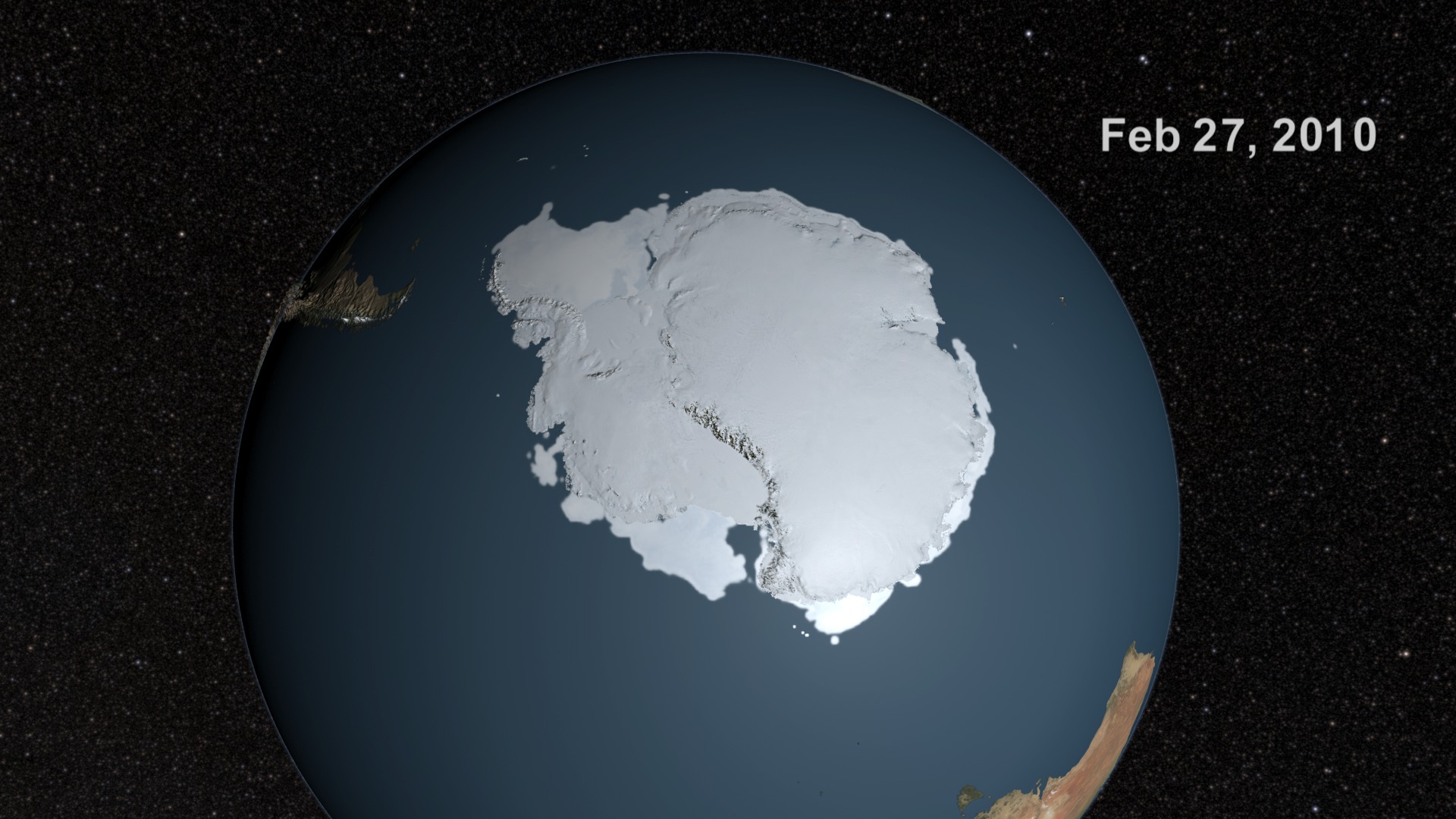Sea Ice Factories
Strong winds rush down the sides of the steep Antarctic ice sheet in winter, blowing frigid air against the sprawling sea ice pack that surrounds the continent. Heavy gusts send ice floes—geometric blocks of floating ice—drifting out to sea, exposing patches of dark-blue ocean between coastal sea ice and frozen land. Beneath the surface of these nascent pools, called polynyas, tiny ice crystals grow. The action of wind and waves push budding crystals together, creating thin films of ice on the ocean surface that increase in thickness over time. Parts of the sea ice pack will encounter warm ocean waters where they melt. By late summer, most of Antarctica's sea ice will have disappeared. The process is part of a natural cycle that scientists monitor closely to better understand its role in the global climate system. Since 1979, the total aerial extent of Antarctic sea ice has increased by less than one percent per decade, though measurement differences of 20 percent or more above or below the average extent have been observed from year-to-year. In the visualization below, watch how sea ice cover in the Antarctic changes from May 2009 through July 2010.

Explore how sea ice forms in the Antarctic.
Watch Antarctica's sea ice grow in the winter and melt in the summer.
NASA scientist Sinead Farrell describes the different types of sea ice that form in the Antarctic.

Sea ice floes move together, drifting between cracks in the ice where ocean water is exposed.

Up to three feet of snow will fall and accumulate on Antarctica's sea ice each year.
Credits
Please give credit for this item to:
NASA's Goddard Space Flight Center
Sea ice photographs courtesy of Sinead Farrell, NASA's Goddard Space Flight Center
-
Animators
- Cindy Starr (Global Science and Technology, Inc.)
- Lori Perkins (NASA/GSFC)
-
Video editor
- Kayvon Sharghi (USRA)
-
Producer
- Kayvon Sharghi (USRA)
-
Scientist
- Sinead Farrell (University of Maryland)
-
Videographer
- Rob Andreoli (Advocates in Manpower Management, Inc.)
-
Writer
- Kayvon Sharghi (USRA)
Release date
This page was originally published on Thursday, September 29, 2011.
This page was last updated on Wednesday, May 3, 2023 at 1:53 PM EDT.
